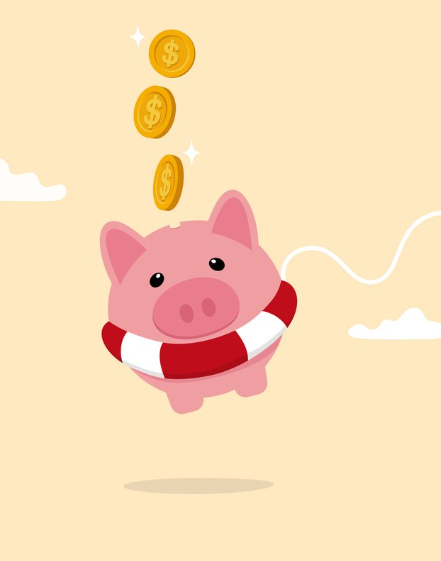Over the past few months, we’ve faced a series of unexpected repairs, and I mean the big-ticket items—the ones that take hundreds of dollars to fix. These are the kinds of issues you don’t think about until they happen, and suddenly you’re scrambling to figure out how to pay for them. Honestly, it was frustrating to put money into a house knowing that the repairs wouldn’t add any value. But despite the stress, I didn’t lose my cool, because I had one thing that made all the difference: my emergency fund.
What Exactly is an Emergency Fund?
If you’ve spent any time reading about personal finance, you’ve probably already heard of an emergency fund. But in case you’re unfamiliar, an emergency fund is simply a savings account set aside for unexpected expenses. Think of it as your financial safety net. This money should be kept in an easily accessible account, such as a savings account, and kept separate from your regular checking accounts to ensure that it’s only used for emergencies.
A tip I’d recommend is to keep your emergency fund in a high-yield savings account. This keeps the money accessible but earns you a little more interest compared to a regular savings account.
When Should You Use Your Emergency Fund?
Your emergency fund is there for life’s unexpected events. This could be anything from a car breakdown to a sudden job loss. If you’re faced with an unexpected home repair or an urgent medical bill, that’s when you dip into the emergency fund.
But, let’s be clear—things like paying for gas, buying a new phone, or dining out shouldn’t count as emergencies. Those are regular expenses that should be planned for in your monthly budget, not paid for with emergency funds.
How Much Should You Keep in Your Emergency Fund?
The amount you keep in your emergency fund depends on your personal situation. A common rule of thumb is to have three to six months’ worth of living expenses saved up. However, if you have an unpredictable income or more significant expenses, you might want to aim for six to nine months’ worth of living costs. The key is to have enough to cover you if something unexpected happens, without sacrificing your other savings goals.
If you’re in debt or just starting to save, aim for a starter emergency fund of at least $1,000. This will allow you to handle most small emergencies without derailing your financial progress. As you work on paying off debt, continue building that emergency fund so that it eventually covers 3 to 6 months of expenses.
Why I Love My Emergency Fund
I can’t stress enough how much I love having an emergency fund. It has been a lifesaver. Over the past few months, we’ve had to deal with several unexpected repairs, and without our emergency fund, we would have been in a tough spot.
Here’s a quick rundown of the repairs we’ve had to make recently:
- Furnace repair: $300
- Water heater repair: $700
- Chimney repair (budgeted): $1,000
- Air conditioner repair: $900
- Lawn mower replacement: $400
That adds up to about $3,300 in unexpected expenses! And while the chimney repair was planned for, the rest of it could have thrown us off track financially if we didn’t have the emergency fund to cover it. Instead of stressing out about how to pay for the repairs, we simply used our emergency fund and moved on.
How to Build Your Emergency Fund
While having an emergency fund has been crucial for us, I understand that building one may seem daunting. But it’s not impossible. It’s all about having a plan and sticking to it. Start by knowing how much you need to save and take small, consistent steps to get there.
If you can’t fully fund your emergency fund right away, start by saving $100 a month. Cut back on unnecessary expenses and direct that money into a savings account. Even a small emergency fund can make a big difference in how you handle unexpected costs.
The important thing is to keep building it, and once you hit your goal, keep it locked away for emergencies only.
Conclusion
An emergency fund is one of the best ways to protect your financial future. While it won’t eliminate all financial stress, it ensures that you’ll be prepared for whatever life throws at you. Having that buffer means you won’t have to dip into your other savings or go into debt when the unexpected happens. So, start building your emergency fund today—because when an emergency strikes, you’ll be ready to handle it like a pro.

发表回复